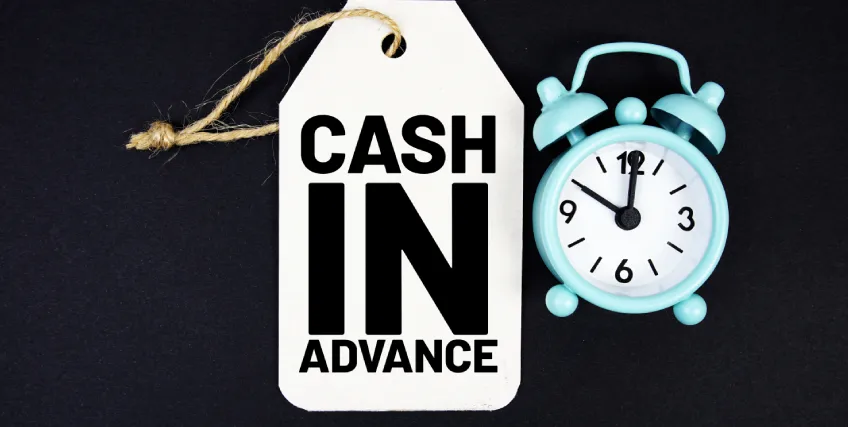How to Use Credit Card Rewards Programs to Your Advantage
April 16, 2025 | Last Updated on: April 16, 2025

Savvy small business owners are always looking for ways to earn extra money and stretch their financial resources. One way is using credit card rewards programs to offset some of your business expenses.
By upping the use of small business rewards credit cards, business owners can free up cash flow and earn cashback at the same time. In this guide, we’ve outlined a simple strategy that small business owners can use to get extra cash into their bank accounts.
Step 1: How To Choose A Business Credit Card That Is Right for You
There is an ample number of small business rewards credit cards available to choose from. Many of them have two different rewards programs to choose from: rewards points or cash back. Cash back credit cards offer the ability to earn a percentage of your spending back as a statement credit, cash back into a business checking account, or gift cards. Credit card points are also a great way to get value back from your everyday purchases. Typically, the redemption options for credit card points are airfare, hotel stays, redeemed for travel partners, and more. The best rewards credit cards will have a wide variety of redemption options.
Additionally, there is a mix of card with and without an annual fee. Cards with an annual fee may come with more benefits, but it’s important to use the benefits to justify the cost of the annual fee.
Redeeming rewards points can be a bit more work to get the best value out of them for travel, while cash back can be a much more straightforward process. The rewards rate and redemption value for these can vary, so be sure to look into the current value.
Keep in mind these factors when choosing a small business rewards credit card:
- Bonus categories: You want to choose a card that aligns with your most used spending categories. For example, if you drive often and spend regularly at gas stations, consider looking for a card that rewards gas station purchases. Or, if you travel regularly and book hotel stays and car rentals, look for a card that earn bonus rewards for travel purchases.
- Multiple cardholders: If you have employees that also need a business credit card, look for a card that gives you free authorized user cards.
- Fees: If you plan on using the card outside of the United States, be sure to get a card with no foreign transaction fees.
- Sign-up bonuses at account opening: Most business credit cards offer incentives to sign up for the card and begin spending. Also referred to as a welcome bonus, these introductory offers can be worth hundreds of dollars in the form of cash back or bonus miles.
Step 2: Start Paying for Regular Expenses with Your Credit Cards
Once you’ve found the card that are right for you, start making as many business purchases on them as possible. Some vendors may not allow you to use credit cards for their services, and that’s okay.
Services like Plastiq allow you to get around these restrictions, but they often charge a fee. The extra rewards that you get for using these services often aren’t worth the fees, but that determination should be made on a case-by-case basis.
Getting started ASAP with spending on your credit cards will also lock-up any available signing bonuses.
Step 3: Rack Up the Rewards and Cash Out When Needed
Once you have a system in place for spending using your cards and paying off the balances, the rewards will accrue automatically.
As time passes, you may identify opportunities or encounter unexpected costs that you would otherwise pay for through traditional credit products. Now, you can redeem your cashback rewards to cover at least part of the costs associated with these instances.
An Example of How Much You Could Be Earning
Restaurant owners spend a lot of money paying suppliers for what they need to serve food on a daily basis. If you spend $1,000,000 every year on supplies and can earn 2% cashback by paying for those supplies with a business credit card, you will earn $20,000 in cashback rewards. Restaurant owners that are cutting a check to suppliers or paying via direct deposit are leaving rewards on the table.
Something every small business owner considering using the cashback strategy should do is analyze their regular spending habits. Find out which of your business expenses could be paid for using rewards credit cards and tally up the total cost. Then, calculate the amount in rewards that you could be earning by multiplying the total amount of expenses by the cashback rate you expect to earn. You could use a simple flat rate of 1.5-2%, or you could pursue more complex estimations by breaking down the expenses by category and identifying cards that earn extra rewards on those categories.
Using Credit Card Rewards Programs Comes With Risks
It’s important to consider the risks involved in taking advantage of business credit card rewards programs and the implications of those risks for implementing this strategy.
Risk 1: Mismanagement Can Hurt Your Business Credit Score
One of the principal benefits of using business credit cards is the build-up of a good credit history for your business. Building up a good credit history boosts your credit score by letting rating agencies know that you are reliable and consistent in paying back lenders (in this case credit card issuers) and can handle multiple streams of credit, which boosts your credit score. This can help you secure other forms of capital down the road when you’re looking for more traditional sources of credit.
However, if you mismanage payment of your credit card balances you can end up significantly hurting your business credit score. There are lots of factors that impact your business credit score. The following are especially pertinent for the cashback strategy:
- Missed Payments: On-time payments are the most important aspect of your credit profile. Not making minimum payments on your credit card bills can do irreparable harm to your business credit score.
- High Credit Utilization: If you use too much of your credit limit each month, your credit score will suffer.
Implications for Implementation: Make sure you make at least the minimum payment on all of your cards every month. Ideally, you’ll pay the entire bill to avoid interest (more on that later). Additionally, make sure you have enough credit available to implement this cashback strategy while keeping your credit utilization under 30%.
Risk 2: Running Balances Can Saddle You with Massive Interest Payments
If you find yourself running a balance at the end of each month, you could potentially be nullifying the value of any bonus points or other credit card rewards. If this is you, consider a balance transfer to a card with a 0% APR, or opting to pay for expenses with cash until you get your card balance lower.
Real Example of A Business Operator Using This Strategy
You might be thinking that this is a bit outlandish and risky, and for good reason. Like we discussed above, heavy use of credit cards can go incredibly wrong if you make critical mistakes. High interest rates can balloon your debt balances and cripple your small business’s financial strategy. Given this likely apprehension from most small business managers, you might be interested in hearing a quick success story of this strategy in action.
Christina Stembel, the CEO of Farmgirl Flowers, had zero credit established when she opened her business. But she spent TONS of money paying suppliers distributors and had the idea that using a cash back business credit card could net her significant rewards to cover unforeseen costs or fill revenue gaps during slow periods.
Prior to the summer of 2018, Stembel had accumulated $115,000 in cashback by putting most of her business costs on the company card and used that to power through the “summer slump” of the flower business. In 2019, she spent over $15 million on shipping and purchasing, which will earn her almost $300,000 in cashback rewards for the year.
Bottom Line on Credit Card Rewards Programs
Qualifying for a business credit card allows you to start earning on credit card rewards programs, and maximizing your spending power.
Everyday spending is the best way to earn heaps of credit card rewards. They will slowly build over time, and you can score some valuable cash back or travel rewards.
FAQs on Credit Card Rewards Programs
Are credit card rewards programs taxable?
Credit card rewards are not taxable, according to the IRS.
What credit score do I need to get a rewards credit card?
Each credit card issuer will have a different credit score requirement.
How do credit card cashback programs work?
Cashback programs worth by giving cardholders a percent value back on eligible purchases on each billing cycle. There can be other perks, depending on the card and issuer.
Are credit card reward programs worth it?
Credit card rewards programs from issuers like American Express, Citi, Capital One, and Chase (to name a few) can be worth it for a small business owner.




